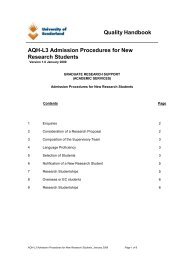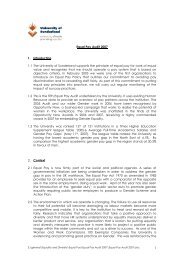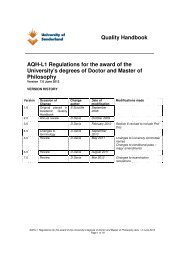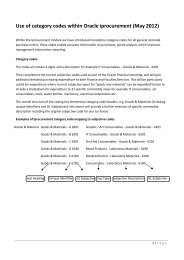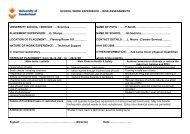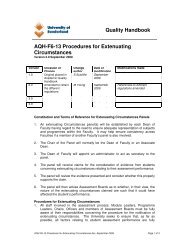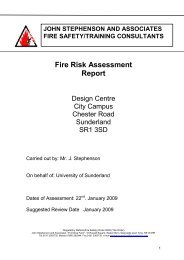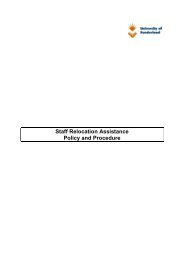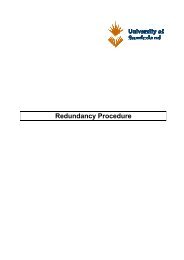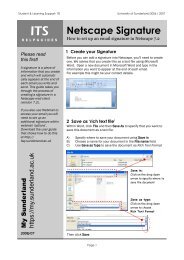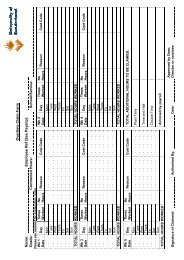University of Sunderland - Travel Plan Final 200510-1
University of Sunderland - Travel Plan Final 200510-1
University of Sunderland - Travel Plan Final 200510-1
Create successful ePaper yourself
Turn your PDF publications into a flip-book with our unique Google optimized e-Paper software.
<strong>University</strong> <strong>of</strong> <strong>Sunderland</strong> <strong>Travel</strong> <strong>Plan</strong> Update<br />
3.1 Staff <strong>Travel</strong> Patterns<br />
3.1.1 All Staff<br />
3.1.1.1 How do staff travel to work<br />
Staff were asked questions on the modes <strong>of</strong> transport they use to travel to work. This included the<br />
following:<br />
• Main mode <strong>of</strong> travel in a typical week; and<br />
• Occasional modes <strong>of</strong> transport used to travel to work.<br />
Respondents could choose between thirteen different modes <strong>of</strong> transport, including car/van driver<br />
(on your own), car/van driver (with others), car/van driver (as passenger), motorbike/ scooter,<br />
train, bus, campus bus, metro metro, park and ride, cycle, walk, taxi and other.<br />
Main Mode <strong>of</strong> <strong>Travel</strong><br />
Staff were asked to specify the mode <strong>of</strong> transport they used to travel to work most frequently. The<br />
results esults are illustrated below in Table 3.1 below.<br />
Mode <strong>of</strong> Transport<br />
5087709/<strong>University</strong> <strong>of</strong> <strong>Sunderland</strong> - <strong>Travel</strong> <strong>Plan</strong> <strong>Final</strong> <strong>200510</strong>.docx<br />
60<br />
Table 33.1<br />
– 2009 Modal Split (Main Mode <strong>of</strong> Transport) – All Staff<br />
Car / Van Driver (on your own) 381<br />
Car / Van Driver (with others) 47<br />
Car / Van (as passenger) 30<br />
Motorbike / Scooter<br />
Train<br />
Bus<br />
Campus Bus<br />
Metro<br />
Park and Ride<br />
Cycle<br />
Walk<br />
Taxi<br />
Other<br />
Total<br />
Number <strong>of</strong> Respondents<br />
The he 2007 questionnaire was prepared using the HEEPI model and contained fewer possible<br />
modal options for respondents to choose. IIt<br />
was therefore necessary to group modal categories to<br />
enable a viable iable comparison between the 2007 and 2009 data as shown in Table 3.2 (over page)..<br />
6<br />
10<br />
78<br />
0<br />
80<br />
2<br />
19<br />
54<br />
2<br />
0<br />
709<br />
% <strong>of</strong> Respondents<br />
53.7%<br />
6.6%<br />
4.2%<br />
0.8%<br />
1.4%<br />
11%<br />
0%<br />
11.3%<br />
0.3%<br />
2.7%<br />
7.6%<br />
0.3%<br />
0%<br />
100%




